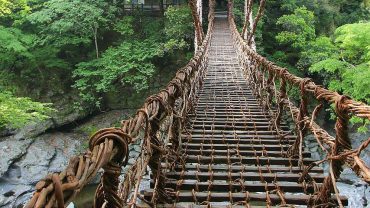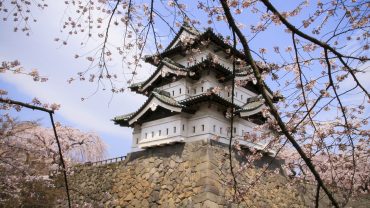EXPERIENCIES FOR PHILIPPINES TRIP
The Republic of the Philippines, consisting of 7,641 islands, stretches over some 300,000 km². The country is divided into three main geographic areas, namely Luzon, Visayas, and Mindanao, with Manila being the capital city and located in Luzon. The Filipinos are considered to be of Malay stock with a mix of Chinese, American, Spanish, and Arab blood. English is, in fact, one of the two official languages of the country. The national language is called Filipino and is based on Tagalog.

1. Weather
The Philippines enjoys a tropical, hot and humid, maritime climate which is divided into three seasons:
- Tag-init or Tag-araw which is the dry season, lasting from March to May
- Tag-ulan which is the rainy season, lasting from June to November
- Tag-lamig which is the cool and dry season, lasting from December to February.
In the South-west of the country, you will experience the Hagabat or monsoon season, which lasts from May to October. In the North, the Amihan, or monsoon, is accompanied by dry winds.
Note : You will be glad to enjoy an average of 300 sunny days a year in the Philippines. However, humidity can rise to up to 80%.
2. Visa
Nationals from 151 countries may enter the Philippines without a visa and stay for a maximum of thirty (30) days, provided they are holders of a passport valid for at least six (6) months beyond the period of stay in the Philippines. They must also present a return or outward bound ticket to their country of origin or their next country of destination (They are quite strict with showing an outbound ticket so plan accordingly). Always do your own research for visa guidelines as they continuously change.
Phillipines Immigration Regulations
3. Travel Insurance
The Philippines is home to some of the best scuba diving, surf, motorbike rides and more, so travel insurance is generally a good idea.
4. Exchange currency
Peso (P). US dollars cash is most useful. Moneychangers and ATMS are widespread; straveller can easily be changed at money changers at the airport and in one of the nation’s ubiquitous shopping malls, if you’re within one of the bigger cities.
Note : Tips of between 5 and 10% are expected in restaurants, round up taxi fares. Specifically, when the car takes you to the sights, remember to bring all the valuable and necessary furniture with you down.
5. International airports
Ninoy Aquino International Airport (MNL) is 7 km from Manila.
Manila is an interesting place, however you should encapsulate your tour within 24 hours. Because the Philippines has many other interesting destinations such as Boracay, Bohol, Vigan … You should take the time to explore many different places to get a more interesting trip.

6. Getting around the Philippines
Travel within the Philippines not difficult, if you don’t mind riding the sometimes rickety public transportation. There are all kinds of transportation available to tourist and locals: Airplanes and ferries for inter-island transfers, buses & taxis ply in major cities all over the Philippines and the ubiquitous jeepney can be found everywhere. In Metro Manila, modern light rail transit is available on main roads. To visit the provinces, there are several bus companies in Metro Manila that plies to all regions of the country (to the North e.g Ilocos region to the South e.g. Davao City). In tertiary roads & small rural towns the jeep & tricycle is the transport of choice.
Private bus companies leave from stations in Manila or can be hailed from the highway between cities. In Manila many of the main tourist locations are linked by the underground Metro and Light Rail Transit. Ferries vary hugely in quality but most services around the southern Visayas from Cebu City are well maintained seacat-style vessels. Internal flights are good value.
7. Food & drink
Filipino cuisine can seem a little lacklustre on first inspection, yet its unending variety of fresh fruits and salty sauces soon grow on you. In Manila try lechon (spit-roasted pig) and avoid balut (about-to-hatch duck embryo, boiled in its shell). Seafood is freshest at dampas – fish markets where you choose the catch and watch as it’s cooked there and then. Kinilaw is a raw fish ceviche (marinated in vinegar). Tropical fruits provide abundant blended fruit shakes such as buko (coconut juice)
8. Traveler Safety
The cities are as safe as most U.S. cities, assuming you follow a number of commonsense tourist precautions. Some dangers are particular to major tourist hubs in the Philippines, such as the “Ativan gang” scam where friendly-seeming locals slip a roofie in your drink and rob you while you’re out cold.
In any place, the place is crowded, the safety is not guaranteed. So, once you’re not really sophisticated about this place, it’s best to stay away from crowded places like shopping malls at night, or even in the lobby of the hotel. Because it is these places that often attract many practitioners to pick up bags and robberies. In addition, crowding and overloading will also make visitors waste time.

9. Scuba Diving
Scuba diving is one of the main highlights in the Philippines. Given the popularity of scuba diving in the Philippines, liveaboard trips are also on the rise:
- Cebu (Malapascua, Bantayan, Moal Boal)
- Bicol
- Tubataha
- Anilao
- Boracay
- Apo Island
10. Island Hopping / Beautiful Beaches
If you want to relax in beautiful beaches, the Philippines has no shortage of those. Everywhere from Palawan to Cebu, there are tons of stunning coastlines to travel:
- Cebu
- Palawan
- Boracay
- Siargao
- Dumaguete
- Siquijor
- Bohol
- Caramoan (Bicol)
11. Surfing
There are loads of great surf spots in the country, with a large majority catering to beginner surfers:
- Siargao
- La Union
- Baler
- Pagudpud

12. Hiking
There are a few great hikes and treks that are worth visiting:
- Banaue Rice Terraces (keep reading this article as I have a full section on it)
- Manila (Taal volcano, Mt. Pulag, Pico de Loro, etc.)
- Bacolod
by Philippines guide





Comment (0)